Tips & tricks
Gear up!
If you want success you have got to show up with the right gear. Good and well functioning tackle and clothing is the first step towards fulfilling your sea trout dream. Mobility is one of the most important factors for a sea trout angler. It is, therefore, extremely important that you think "mobile" from the very beginning. How much tackle, food, drink and clothes you take in your car is of little consequence, but when you move away from the car and go sea trout fishing, you must think before you pack. Never carry more tackle than you can carry in your pockets and possibly in a small rucksack. Forget all about large tackle boxes and cooler boxes. You have to be able to move while fishing.
Things you should also take Thorough preparation is essential, and the more you reckon with, the better your chances for success. Some things are to take in your pockets and others can be left in the car.
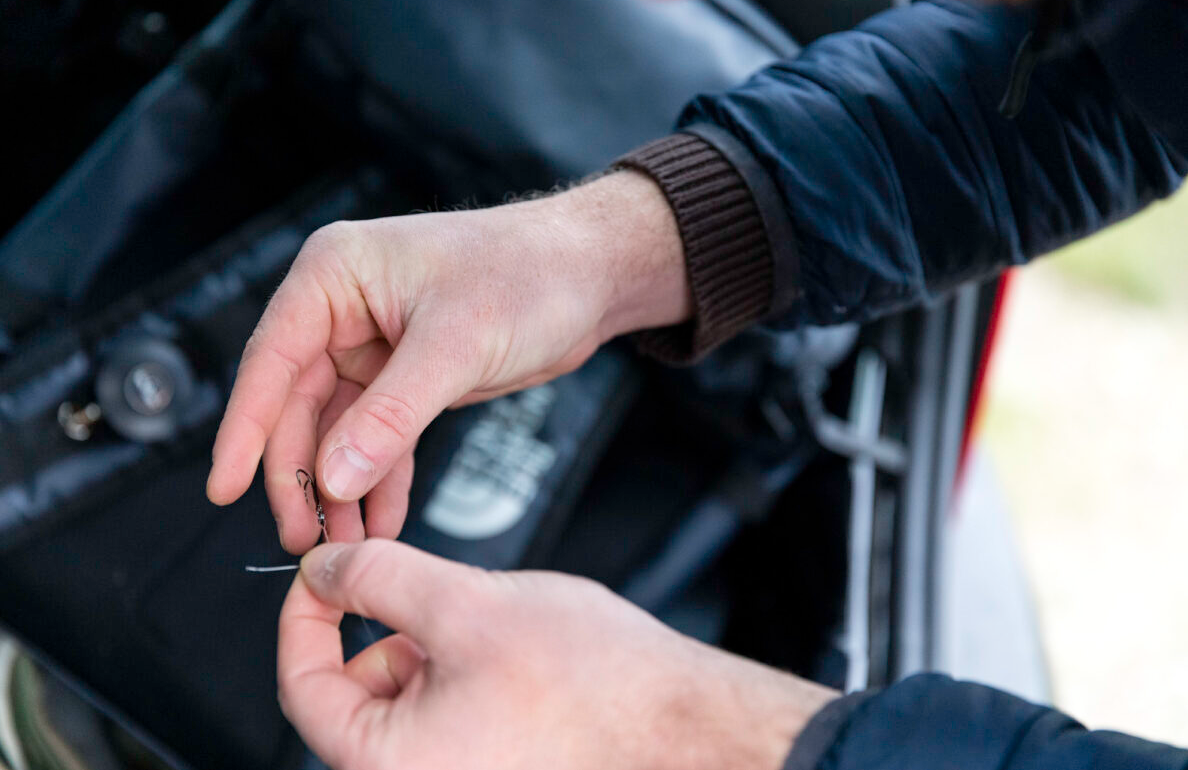
Things for the pockets!
- Measuring tape - remember that the minimum length is 40 cm.
- Small torch - you will often be fishing until it gets dark
- Extra line/tippet material. The line can tangle at any time.
- A robust compact camera.
- You take a lot of pictures of large fish
- Mobile phone, so you can get the latest weather updates
- Some extra energy in the shape of a piece of chocolate and possibly a soft drink
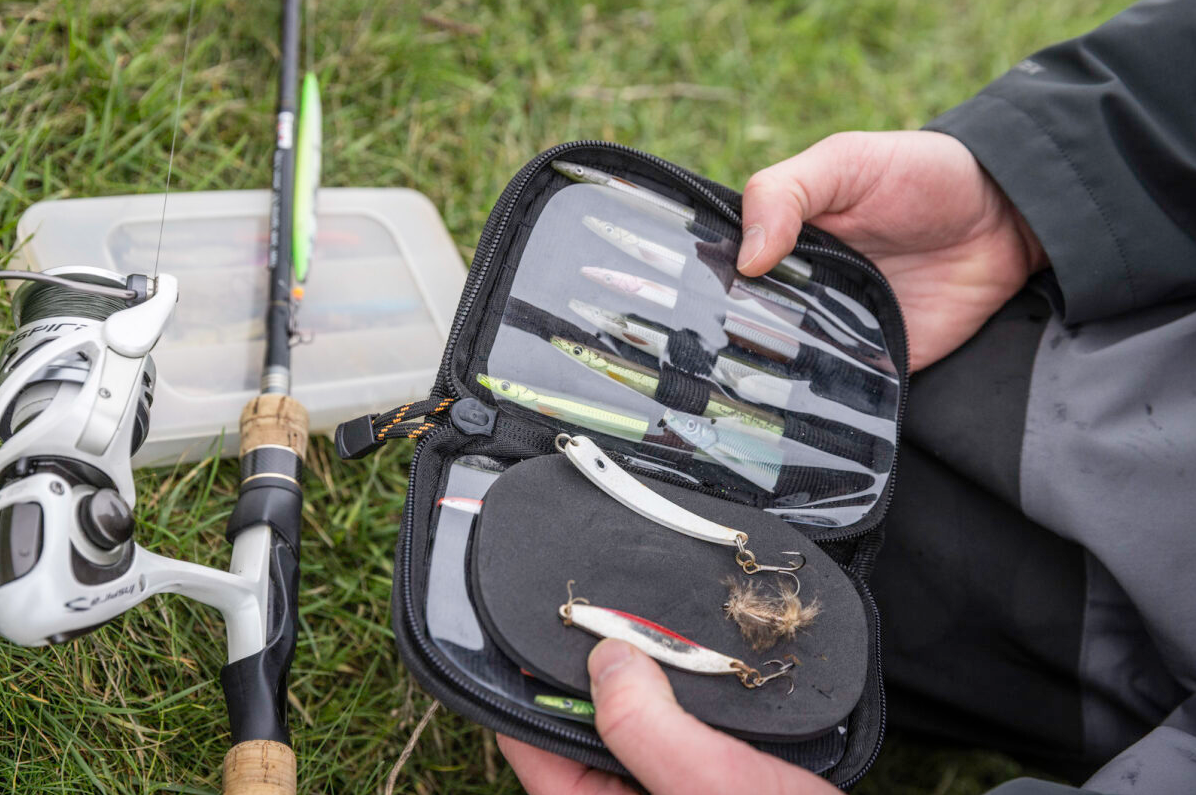
Things for the car!
- Guide book - "117 Fine Fishing Spots on Fyn"
- A large lunch pack
- Extra clothes for changing - if you should accidentally get wet
- Extra fishing gear
- First Aid box and sunscreen
- Water
- A garbage bag (the only thing we leave behind is our footprints in the sand)
- Spare gear
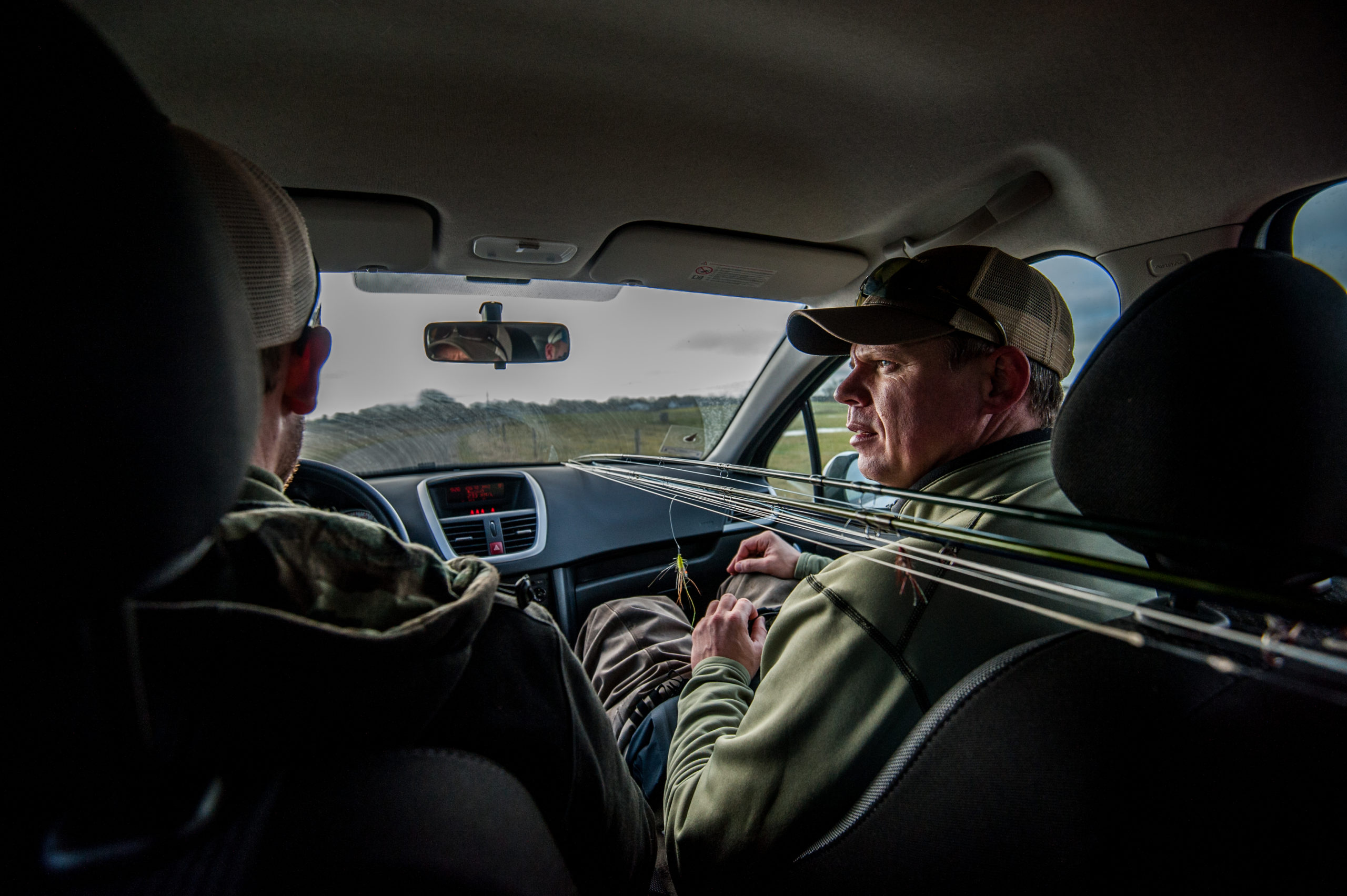
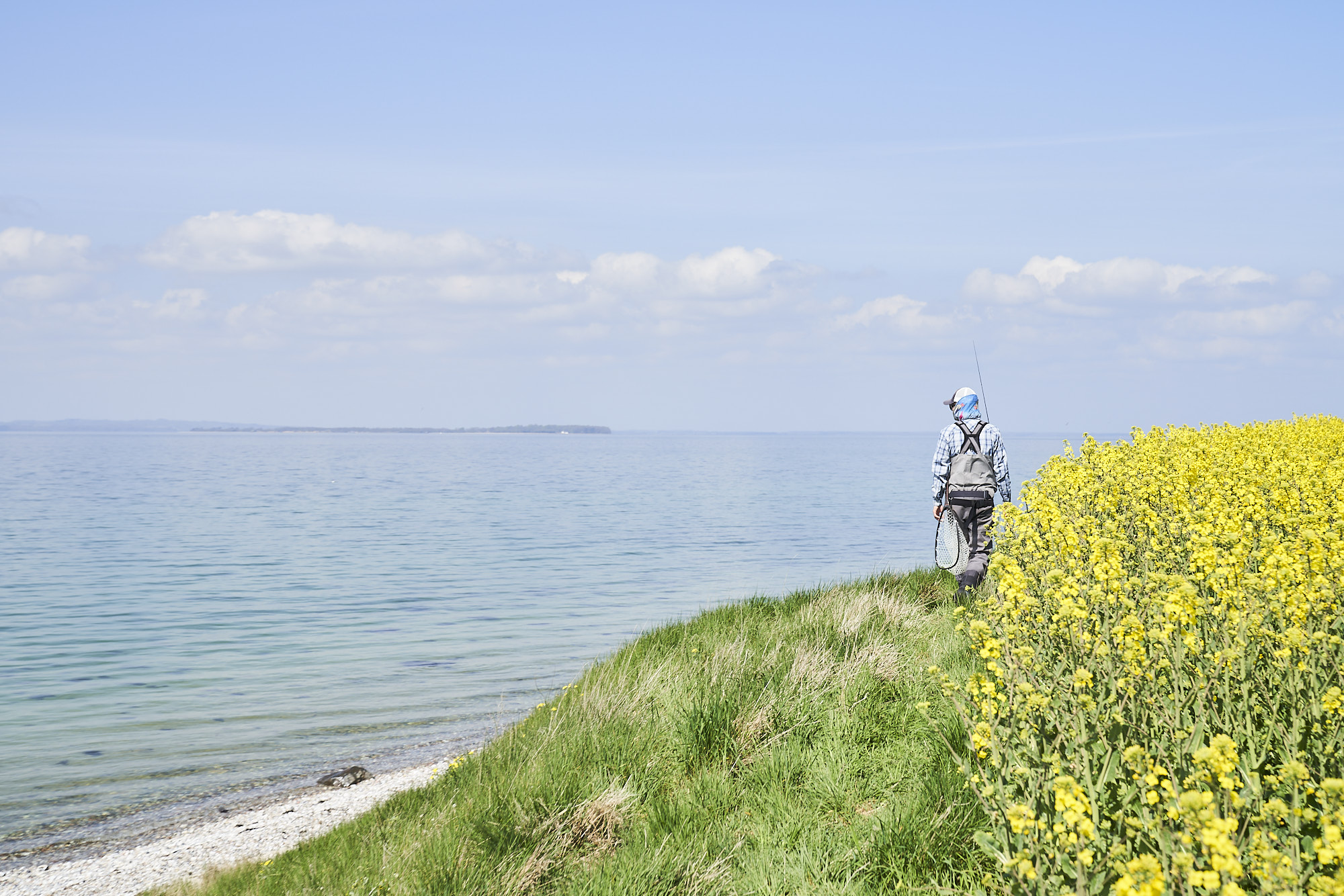
The seasons - Spring
Fishing in spring
Spring: March – May
March to May are fantastic months on the coasts of Fyn. The island is simply surrounded by trout, which, just like the anglers, wake up as the days get longer. Unfortunately, many anglers have a tendency to start slowly, and so they actually miss the best month, which is March.
Do not be afraid to book an early fishing holiday. March and the first half of April are much more rewarding than late April and May. Just as in winter, the fish shoal in the spring. Early in the period, they mainly stay close to their overwintering grounds in fjords and bays. A little later, they also spread out to the deep open coast.
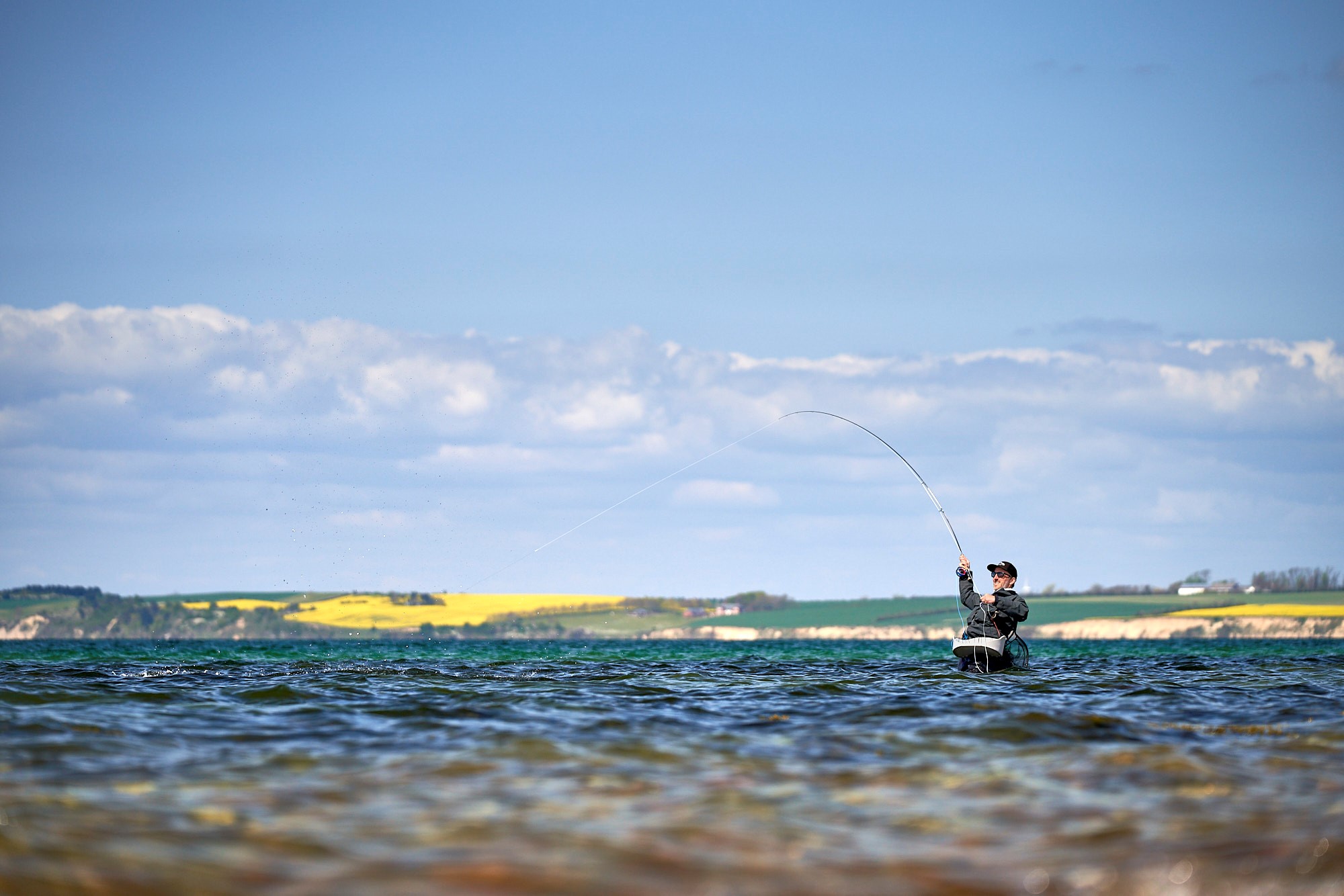
The normal fishing method is to keep mobile, moving and trying several places looking for fish. “The burnt petrol tactic” is what experienced sea trout fishermen call it. It is quite normal to try four to six places in a day. There is a chance the whole day long, but once the water warms up properly at the end of April, then the best times are early morning and evening. In May there can be excellent night fishing.
A lot of the catch is still the small “Greenlander” fish, but the sizes will now increase and it is quite normal to land a fish between 45 and 55 cm long. Every year in the waters of Fyn, there is also a migration of larger trout, which come near the coast. These are the fish anglers dream of, between 65 and 80 cm long. You can also find big descending fish. At the start of the period they are still dull and thin, but later they become shiny and much healthier.
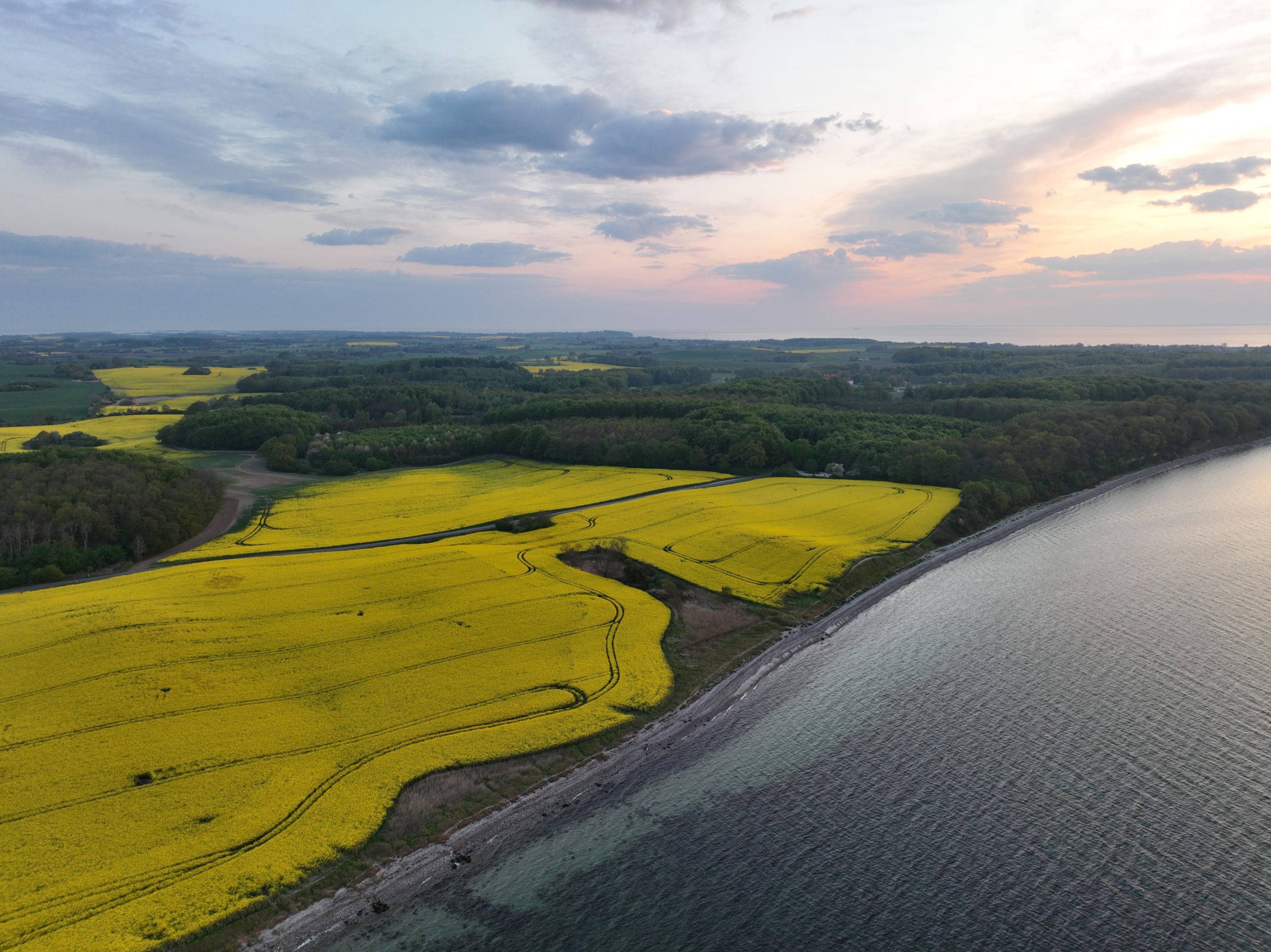
Spring bait for spinning
In the spring, sea trout are generally ready to bite. It is often a good idea to use large bait at the beginning of the season. Later on, do not fish so thoroughly, and a lively spoon or wobbler might be better. On a hot, calm day when the water is clear, the trout can be a bit more difficult. A small spinner is then a killer choice.
Fly fishers- spring favourites
It is a good idea to use larger flies in March and April, and smaller flies in May. However, there are some summery days in March and April when the fish can only be tempted with small flies. Pay attention to this. Bristle worms are a very important food source in the middle of the period. This means that bait which imitates them is also important.
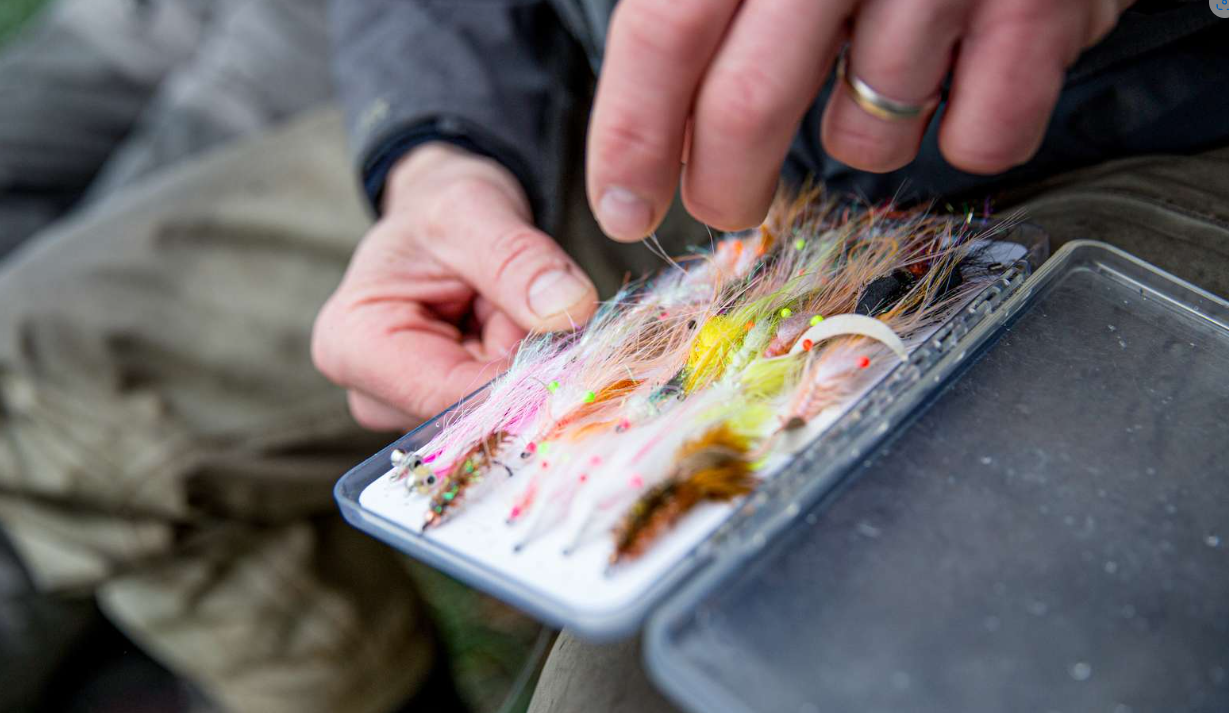
6 reliable tips for spring
- Be very mobile. If you have not seen or felt a fish after a maximum of two hours, then move on.
- Fish all day in March and April, and mainly in the mornings and evenings in May. In times of very warm weather, try night- fishing in April and May.
- Do not forget the winter spots at the start of the spring. The trout do not leave them so quickly as we sometimes think.
- Note the weather conditions. A change from cold to warm can be spectacular in terms of fishing.
On the other hand, a cold snap at the start of spring can put the fishing on hold. - Do not take more tackle than you can carry in a small rucksack. At each location you should also move around; fish wide stretches in a short time.
- Use spinners or flies as you wish. Both methods work in the spring.
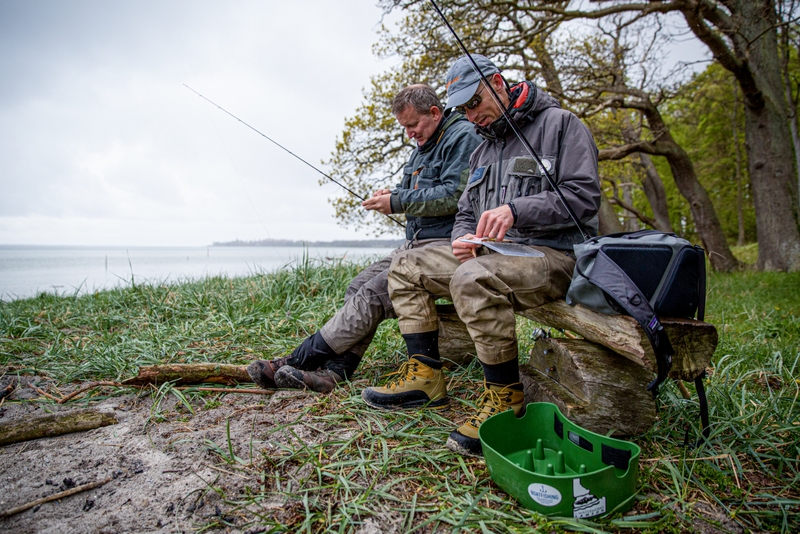
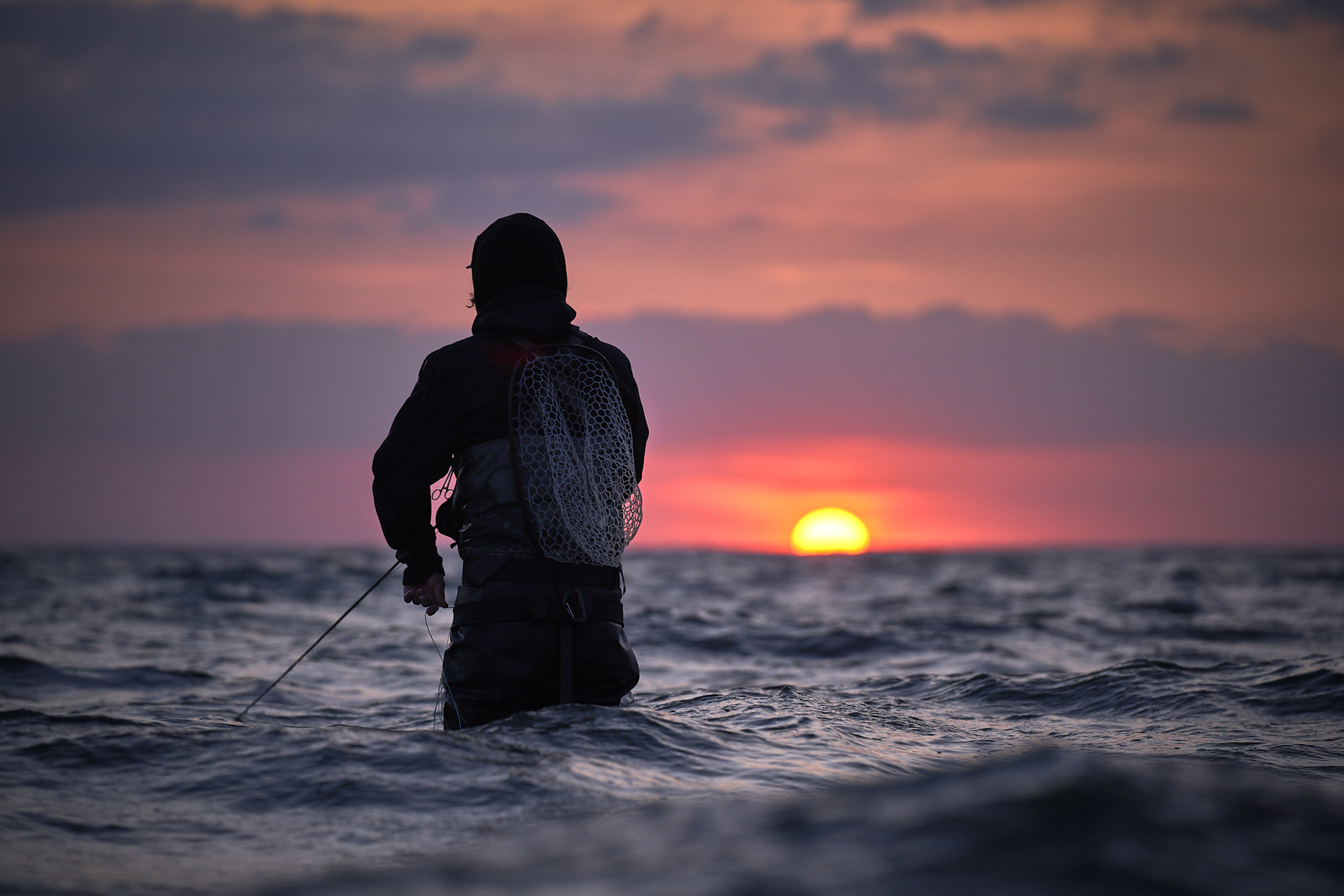
The seasons - Summer
Summer: June – August
When the coastal waters of Fyn start to get really warm at the beginning of June, sea trout fishing becomes somewhat different. High sun and crystal clear warm water are hopeless conditions for catching sea trout, but when the sun is setting, the trout wake up and start to forage in the rich shallow water.
So fishing in the summer means fishing at night. In June the trout can enter all the known coastal spots. Even the calm fjords and bays can offer good chances, but in July and August, fishing should be concentrated around reefs and points where there is deep, cold water, preferably with a strong current.
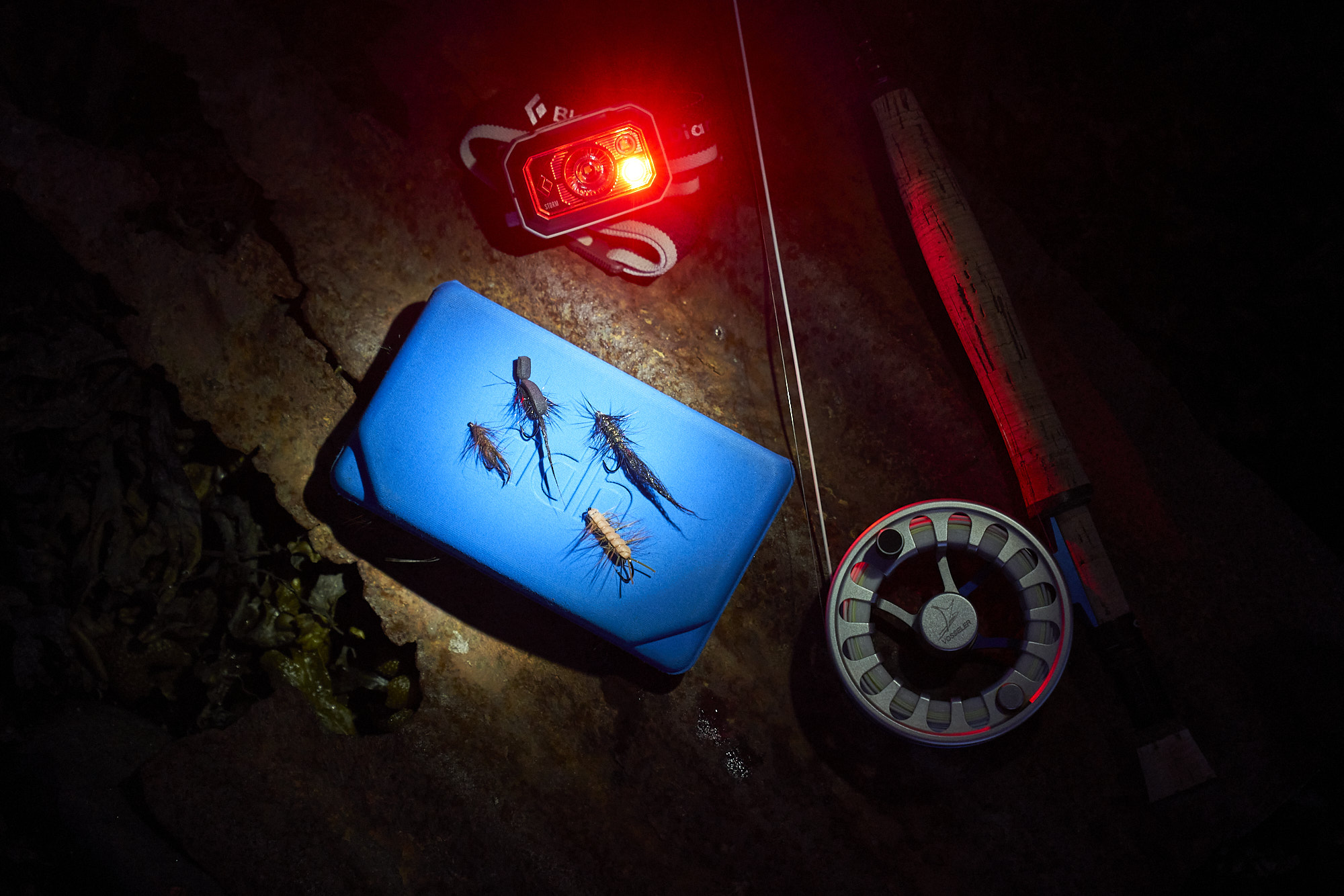
At night it is important to fish with the bait right on the surface, so that the sea trout can see it against the light night sky. Fly fishing generally gives the best chances, but spinners can also be used. The spots are few and concentrated in the summer when many people have their holidays. All good spots are well visited, and you cannot count on having the coast to yourself.
On the other hand, the biggest sea trout are caught on Fyn in the summer. It is quite normal to land a fish between 50 and 60 cm, and there are plenty of fish between 5 and 7 kilos. Keep in mind that fishing in the summer is very variable. A spot can be totally lifeless one night and teeming with fish the next. You can only hope that you have chosen the right place and fish through the night. In general, you should not change areas, as the nights are short and you will waste a lot of good fishing time in the car.
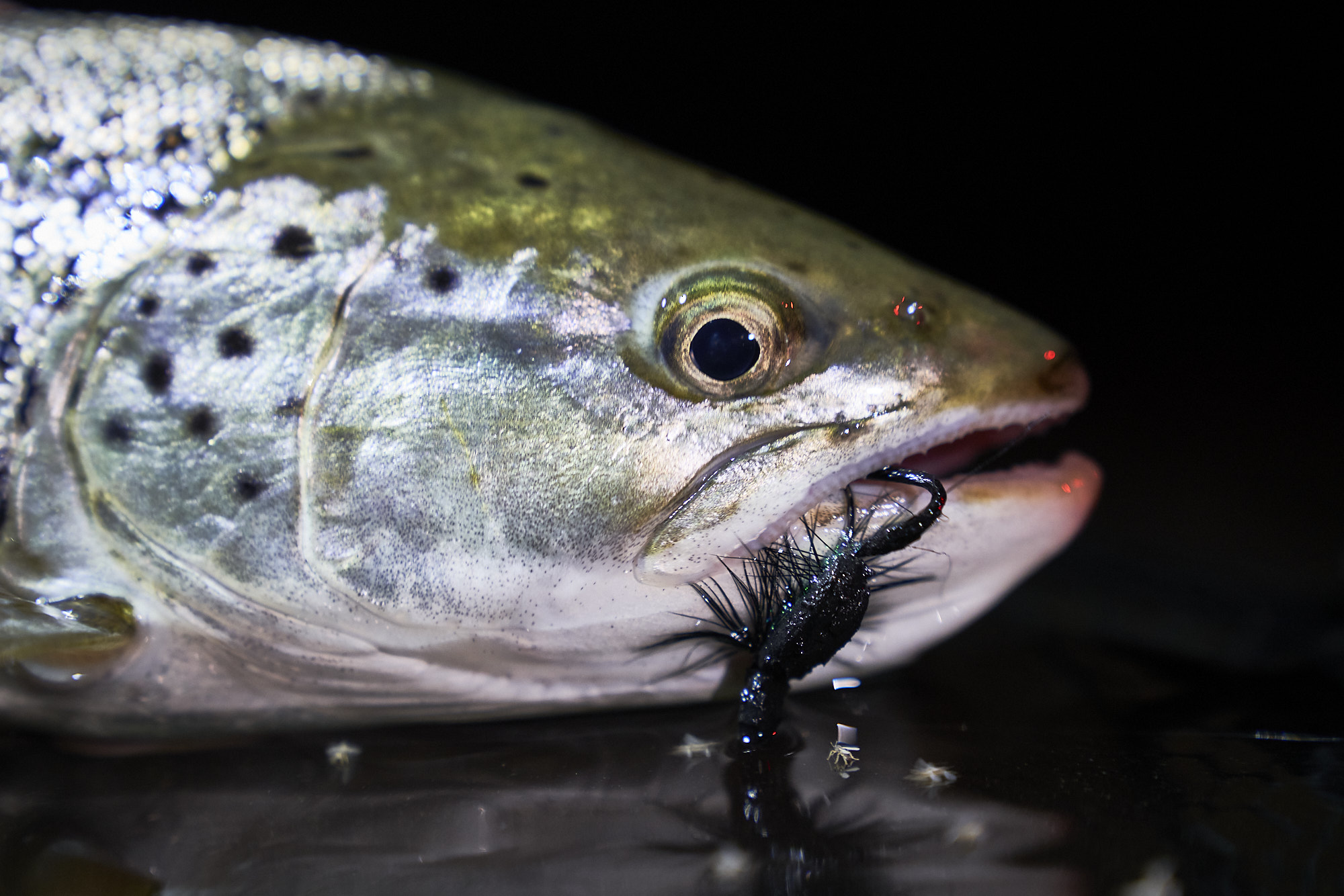
Good spring fishing spots
The numbers refer to the place numbering in the “117 Fine Fishingspots of Fyn"
1, 11 Enebærodde and Midskov:
When a large proportion of the sea trout leave Odense Fjord in the spring, then naturally enough, the areas around the mouth of the fjord afford good fishing.
22 – 25 Kerteminde to Nyborg:
This stretch has a lot of sandy bottom, with deep, seaweed-filled basins close to the land. Especially at high tide, they can give an abundant catch.
43 – 58 Langeland:
The spring is the high season for fishing on Langeland. There are great chances round the entire island. Choose the spot according to the wind conditions.
59 – 70 Ærø:
Just like Langeland, the best fishing on ærø is in March and April. Ærø is a great island to visit for a couple of days, and you can always find undisturbed spots.
90 – 96 Helnæs area incl. Torø:
A delightful area with lots of good chances. There is always a good fishing stretch, whichever way the wind is blowing.
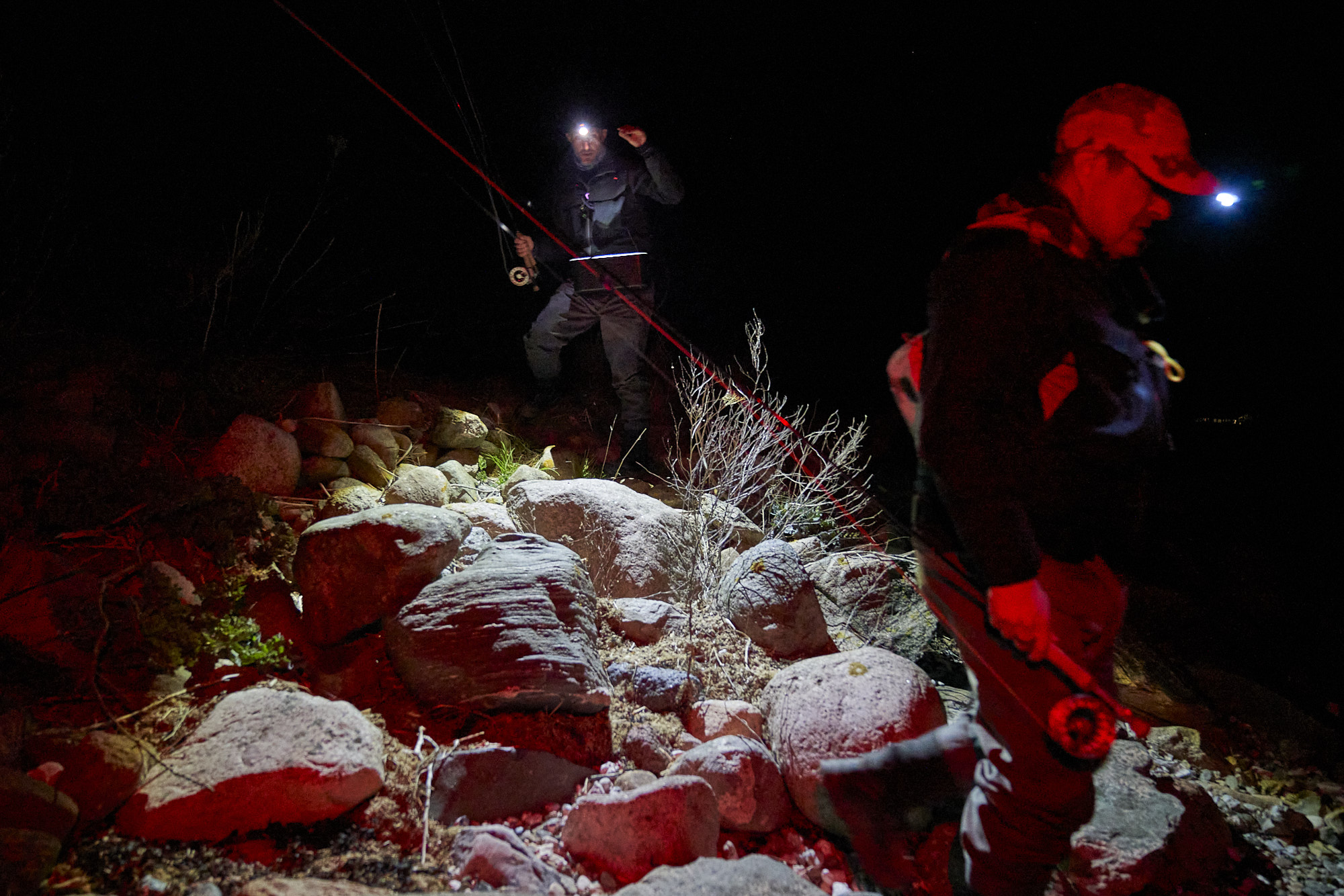
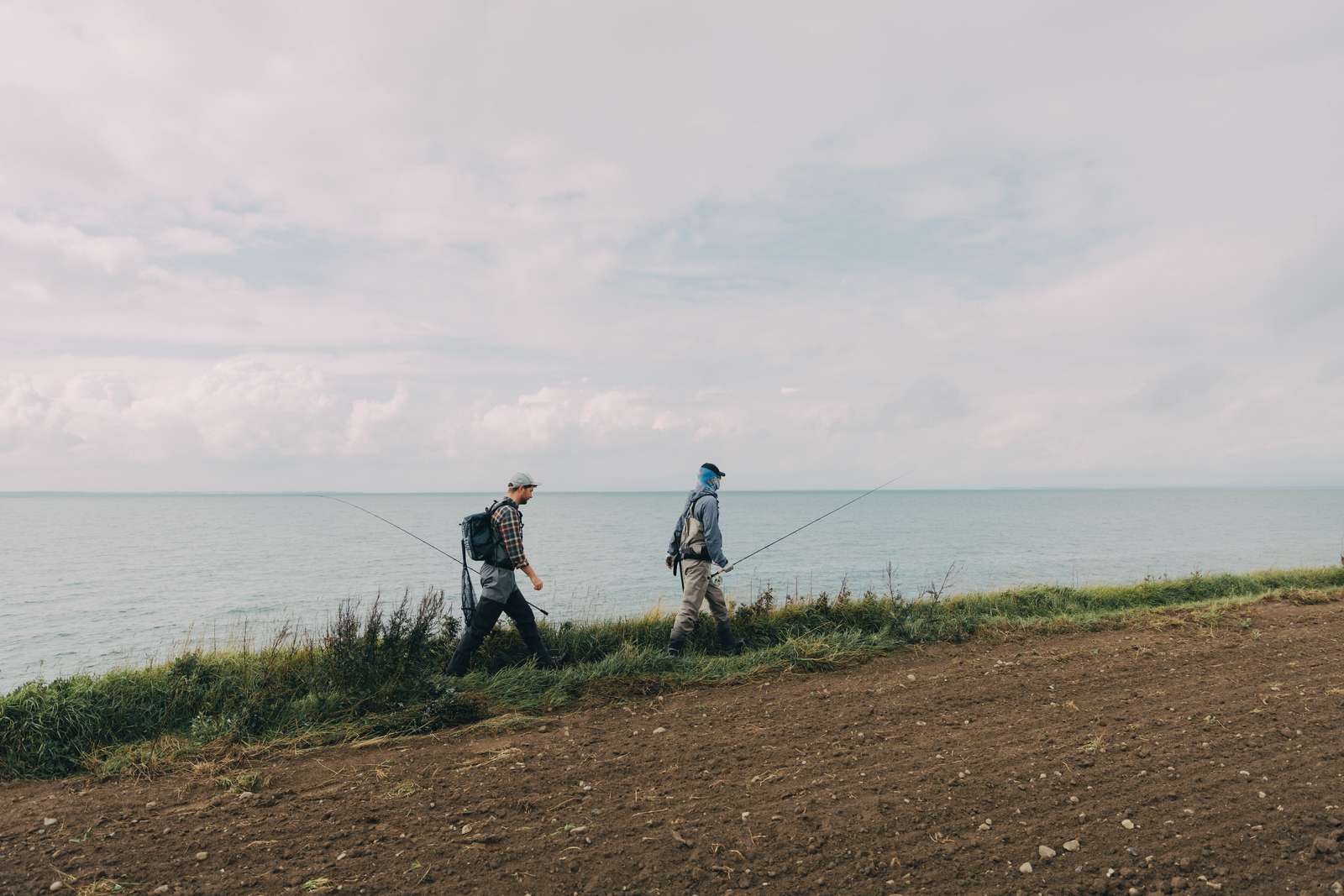
The seasons - Autumn
Autumn: September – November
September, October and November are fantastic months for fishing along the coast of Fyn. At this time there are two types of sea trout to go after. One is the shiny fish, which are still hunting for food along the coast. Generally these are small fish, around minimum size, up to 50 cm. In most cases the larger sea trout have started migrating towards the winter spawning rivers. During the autumn they slowly lose their shimmer and take on the brown appearance typical of spawners.
Catching a coloured sea trout in sea water is quite normal during the autumn. Some anglers put the coloured fish back, others take them home as they make excellent eating. Until the 15th of November, this is an individual choice. After then, all coloured fish must be put back. In the autumn, there is a good chance for a catch throughout the day.
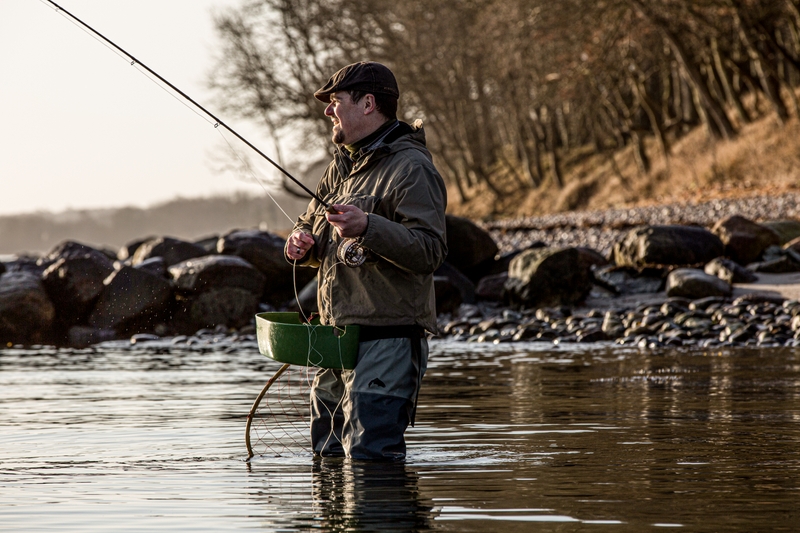
However, particularly in September when the water is still warm, fishing in the mornings or evenings are the best. The fish move around a lot in the autumn. This means that a coastal spot that seems devoid of fish one day can be teeming with sea trout the next. Points, reefs and tongues protruding from the coast are good places to find migrating fish. Deep basins right up against the coast are also especially rewarding.
At this time of year, the sea trout are not very sociable. They tend to go off individually or in pairs along the coast.
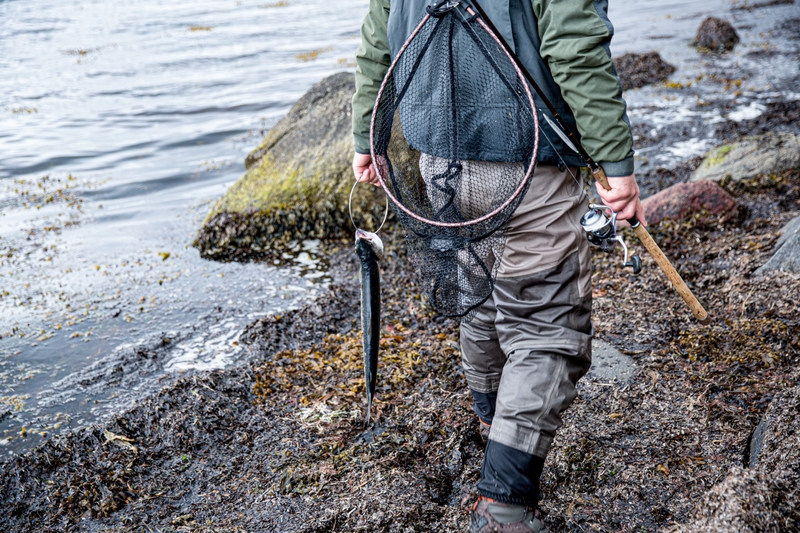
Spin & Fly
The autumn is the time for light spinning gear. Thin lines (nylon 0.20 – 0.25 mm, or braided line, 0.10 – 0.17 mm), light rods and short, accurate casts to where the trout are lying. Small bait is the thing, such as 8 – 12 gram spoons.
Wobblers of the same class and small spinners are very effective. A small suspended fly in front of the bait is always a good idea. Dark, subdued colours are good, but do not be afraid to experiment with fluorescent colours now and again. You can see some tried and tested autumn baits here.
Fly fishing really comes into its own in the autumn. The fish are very close to the coast and can normally be caught with fly tackle. For the most part, use smaller, discrete flies, but always take some big colourful flies to experiment with.

